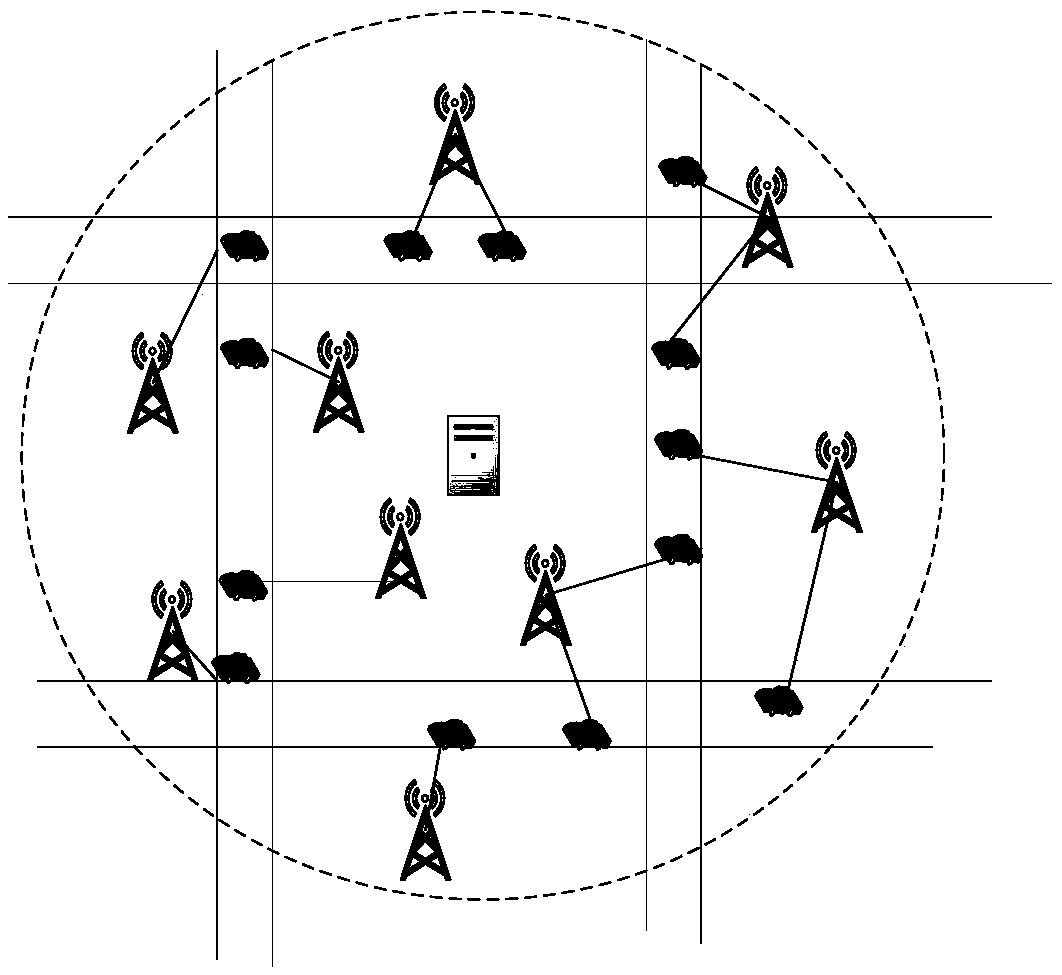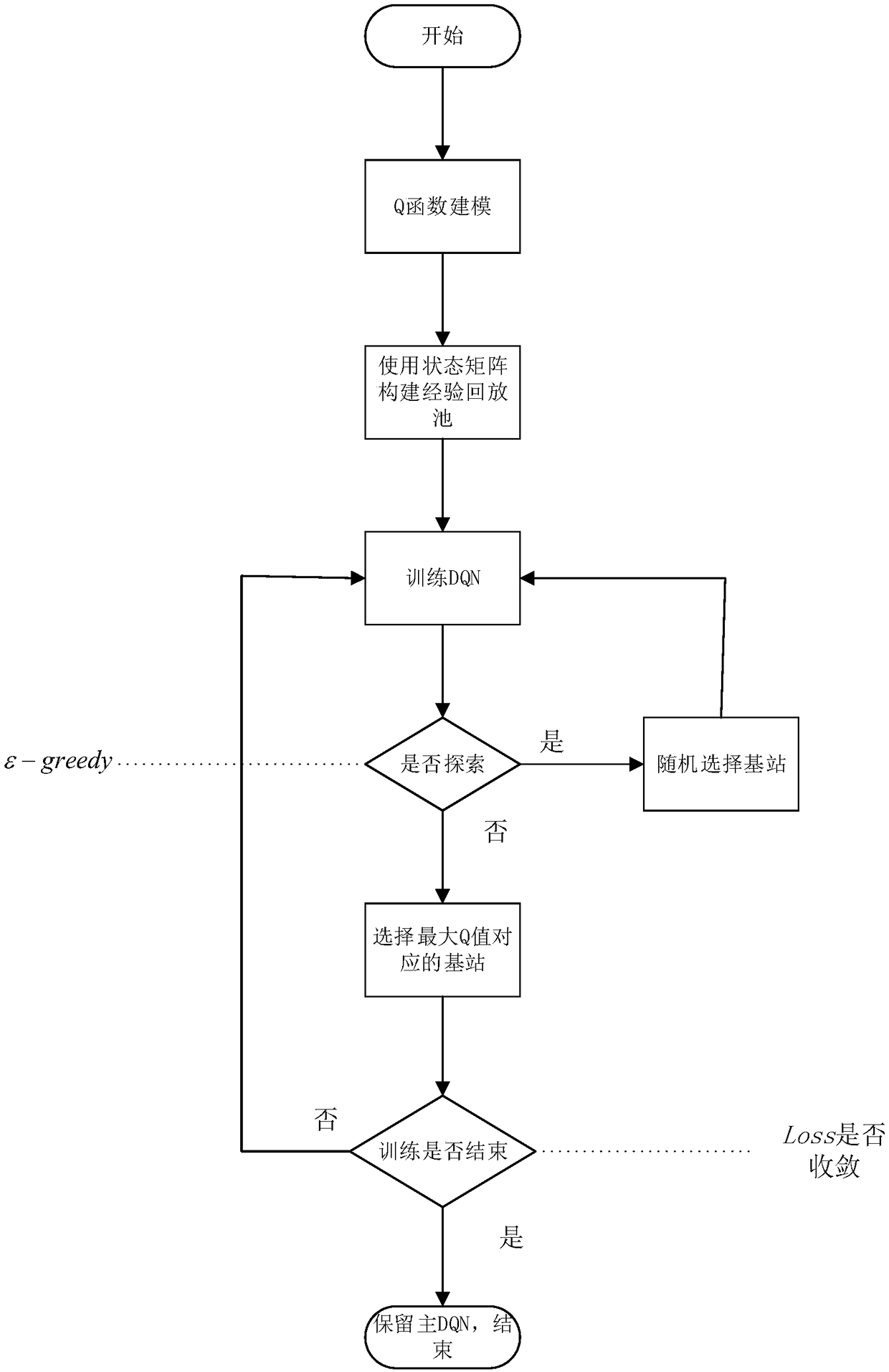Base station selection method based on deep reinforcement learning in LTE-V
A technology for LTE-V and base station selection, applied in the field of LTE-V communication technology and DRL, it can solve the problems of LTE network capacity test, network congestion, information delay, etc., to increase the richness of action space, ensure load balance, and ensure time The effect of extension
- Summary
- Abstract
- Description
- Claims
- Application Information
AI Technical Summary
Problems solved by technology
Method used
Image
Examples
Embodiment Construction
[0036] The present invention will be described in detail below in conjunction with the accompanying drawings and specific embodiments. This embodiment is carried out on the premise of the technical solution of the present invention, and detailed implementation and specific operation process are given, but the protection scope of the present invention is not limited to the following embodiments.
[0037] The present invention aims at the problem that vehicles under Long Term Evolution-Vehicle (LTE-V) compete randomly to access the network, which is likely to cause network congestion, and provides a base station selection method based on deep reinforcement learning in LTE-V, At the same time, taking into account the delay performance and load balancing performance of communication, so that vehicles can communicate in a timely and reliable manner. Application scenarios such as figure 1 shown. The present invention uses the Mobility Management Entity (MME) in the LTE core network...
PUM
 Login to View More
Login to View More Abstract
Description
Claims
Application Information
 Login to View More
Login to View More - R&D
- Intellectual Property
- Life Sciences
- Materials
- Tech Scout
- Unparalleled Data Quality
- Higher Quality Content
- 60% Fewer Hallucinations
Browse by: Latest US Patents, China's latest patents, Technical Efficacy Thesaurus, Application Domain, Technology Topic, Popular Technical Reports.
© 2025 PatSnap. All rights reserved.Legal|Privacy policy|Modern Slavery Act Transparency Statement|Sitemap|About US| Contact US: help@patsnap.com



